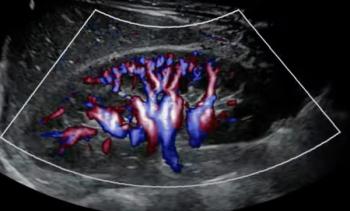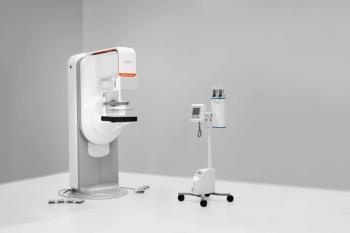
Post-Operative Radiotherapy Offers No Benefit with Non-Small-Cell Lung Cancer Patients
Treatment does not significantly change three-year disease-free survival rates.
Post-operative radiotherapy (PORT) used in some non-small-cell lung cancer (NSCLC) patients does not significantly change their three-year disease-free survival rate, newly presented research has revealed.
These findings, presented Sunday at the European Society of Medical Oncology 2020, show PORT offers no statistically significant difference when used with NSCLC patients following complete research and after neo-adjuvant chemotherapy. The results answer the question that has lingered since the late 1990s about whether this treatment offers additional benefit in patients with mediastinal nodal involvement (pN2), said investigators from the Institut Gustave Roussy in Paris.
Recent improvements in neo-adjuvant chemotherapy and radiotherapy in Stage 3 resected patients and non-prospective studies have suggested that modern PORT could improve outcomes, however, giving rise to the need for larger, randomized trials that could effectively evaluate the role modern mediastinal PORT can play in adequately staged and surgically treated patients.
Study lead Dr. Cecile Le Pechoux, a radiation oncologist from the Institute said this study, which explores mediastinal PORT in patients with completely resected NSCLC with histo/cytologically proven nodal involvement, provides that needed data.
“PORT cannot be recommended for all patients with Stage 2 and 3 NSCLC with mediastinal nodal involvement. Possibly, however, for some patients it might be useful because it does decrease the rate of mediastinal relapse by 50 percent,” she said. “This must be put into balance with the risk of over-added cardio-pulmonary toxicity. We need to do further analysis to determine if certain patients, in particular, could benefit from it.”
To reach this conclusion, the team recruited 501 patients into an intention-to-treat analysis. Of the group, 252 received PORT over five weeks, and 249 were placed in a control group. The team also conducted a safety analysis with 487 patients.
According to the results, the disease-free survival rate in the PORT cohort was 47.1 percent, and it was 43.8 percent in the control group – a difference that the team did not consider statistically significant. The hazard radio was 0.85 for patients receiving PORT compared to those in the control population. Additionally, for the PORT group, the overall survival rate at three years was 66.5 percent compared to 68.5 percent in the control group.
Based on these results, said Rafal Dziadziuszko, professor and radiation oncologist from the Medical Univesrity of Gdansk in Poland, radiotherapy should not be the go-to treatment in these situations.
“Radiotherapy to the mediastinum after surgery, after adjuvant chemotherapy shouldn’t be recommended as standard of care. This will change the practice of many institutions that adopted standard use of radiotherapy in these patients,” he said. “We can safely say there is no net benefit from such treatment but there is also potential harm, which we see from this study, so any potential benefits in some patients are offset by the predominantly higher risk of cardiopulmonary toxicities.”
Newsletter
Stay at the forefront of radiology with the Diagnostic Imaging newsletter, delivering the latest news, clinical insights, and imaging advancements for today’s radiologists.




























